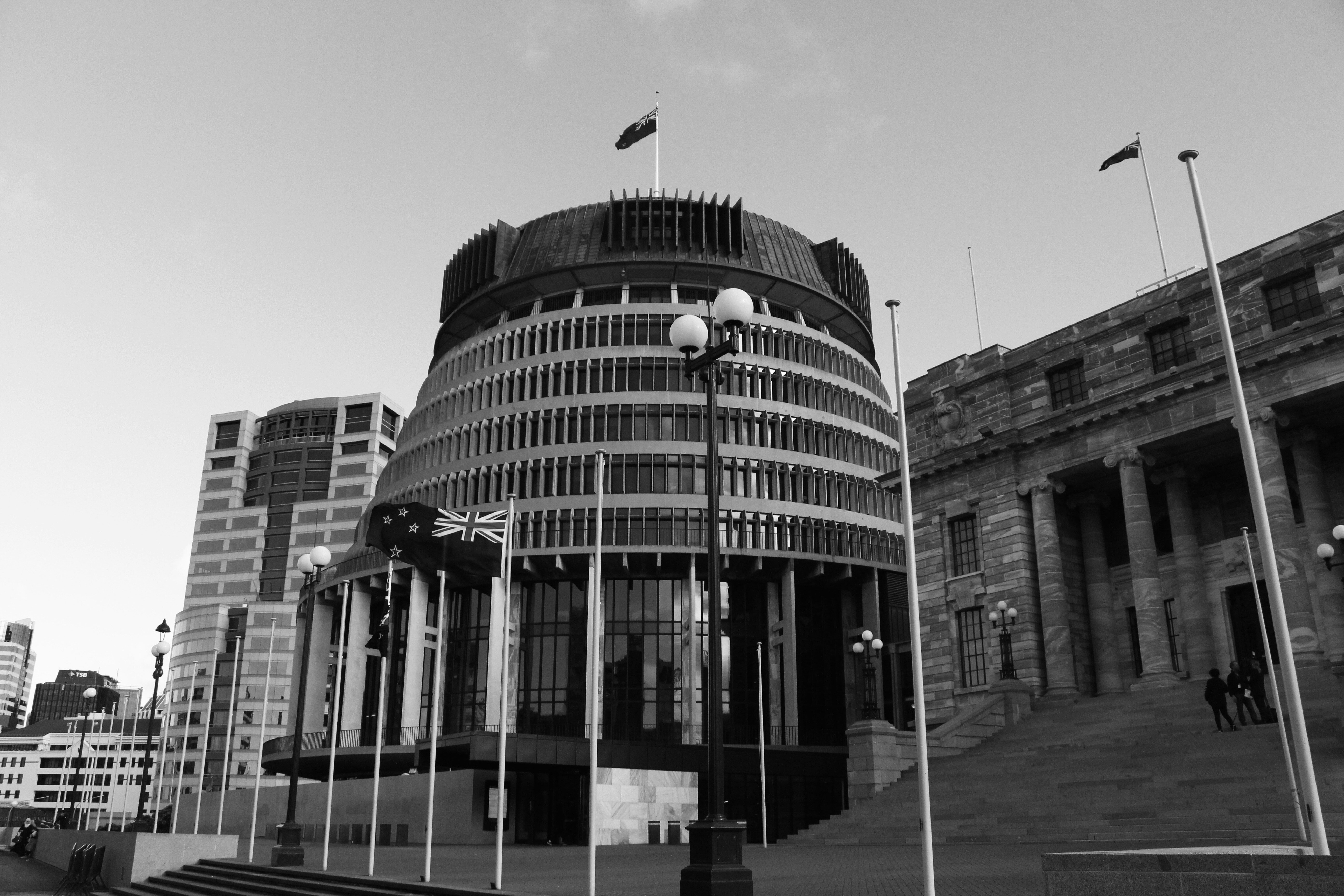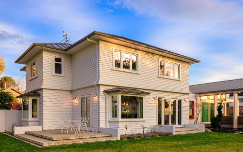by Andrea Davison, New Zealand Green Building Council
Is 'liveability' an objective or subjective concept? Is it unique to an individual or is it something we can commonly understand? Can it be measured? In my experience of living in three of the most ‘liveable’ cities*, there have been some commonalities. The first being that I have loved living in all three cities (yes, including Auckland).
(*Zurich, Vancouver and Auckland – all having continuously featured in the top 5 global cities under ‘Mercer’s Quality of Living Survey’, since 2010)
Accessibility
I never had a need to drive during the 8 months I was in Switzerland. I took buses, trains, trams, and often a combination of the above, to go anywhere and everywhere I wanted, and given the regularity of the timetables, I could predict to the minute the moment I would be knocking on a friend’s door or arrive at the movie theatre.
In Vancouver I had no need for a car. For almost 5 years my husband and I got around by SkyTrain, bus, ferry, coach line, and of course walking. We occasionally rented a car to go away for weekends, but all-in-all our transport-related environmental footprint remained reasonably small (which perhaps helped to offset our rather large air-travel impacts…).
Now that we are living in Auckland, you may think this public transport positivity has dissolved into pessimism... Actually, no. Surprisingly, we have managed to maintain a lifestyle that doesn’t require us to drive everywhere. This has, in part been due to luck, and in part, choice. We live close to fantastic public transport routes that go in multiple directions and at a frequency we don’t need to worry about checking a timetable. We have reasonably close access to a train station, and easy access to the ever-growing network of cycleways threading their way across Auckland. School is one block away, and day care a further three. The bus stop is one block away and both our workplaces within a couple of blocks at the other end.
You may not believe this if you currently rely heavily on your car to get around, but there truly is a freedom in being able to live car-free. This freedom, however, is contingent on an abundance of alternative transport options and opportunities.
And admittedly, I do not live completely car free. We even own an SUV. Not exactly the most environmentally friendly of vehicles. Three kids and a caravan influenced this decision. Perhaps we could try harder. However, I mitigate my environmental guilt by applying the first principle of sustainability: ‘REDUCE’. Reducing the need for frequent vehicle trips by using public transport for commutes and walking to the supermarket instead of dashing out in the car.
Active Living
Prioritising a reduction in car use can have positive side effects on both physical and mental health. Cities with good public transport systems also have overall better public health. Per capita, traffic deaths decline as transit ridership goes up. Research also shows that obesity rates are inversely related to use of alternative travel modes (walking, cycling and public transit)
I would argue that it also supports positive mental health. Taking an extra 10 minutes to walk up to the shops instead of taking the car provides me with a bit of fresh air and breathing space between other tasks in the day. I often bump into my neighbours on the way too. And I have found going with my son on our scooters to soccer on a Saturday morning has multiple benefits – it allows me to squeeze in some exercise, it initiates healthy habits for my son, and it is far less stressful than battling with all the other SUVs for the few parking spots available.
Access to nature and open spaces
In addition to walking to and from amenities, what also makes a ‘liveable city’ is access to nature and open spaces for recreation. In Vancouver, we lived one block from the ‘seawall’ a walkway around the waterfront 22 kilometres long. In Zurich, I had a local lake to walk around on weekends. Most New Zealand cities and towns have no shortage of beautiful natural areas, parks and waterways. One of the jobs of our planners and developers is to ensure that we all have equitable access to these spaces.
Why have I included the word ‘equitable’ here? In recent years, as my father-in-law’s disability has progressed we have worked hard to take him out and about to ensure that his quality of, and outlook on life remains positive. We have taken him on walkways where no wheelchair was ever supposed to go, often leaving my mother-in-law (and admittedly myself) so nerve-wracked we couldn’t watch as his two sons negotiated him around some rocky cliff edge. But the risk has always been worth it. Everyone deserves to live an active life, even those who rely on mobility devices to get around.
Density
Density is something of which many New Zealanders are a little wary. But it is often density that supports benefits which contribute to liveability. Certainly, when it comes to accessibility for my father-in-law, in our experience we have found small towns and remote areas of New Zealand typically more challenging than Auckland where there is a good variety of accessible open spaces, parks, walk and cycleways.
Density supports successful businesses. In the suburb I live there have been many great cafes come and then go and I’ve often thought that an increase in (high quality) density would have enabled these businesses to survive and indeed thrive. In Vancouver, the fact that I had within walking distance of home grocery stores, a liquor store, cafes, restaurants and bars was largely due to the number of people living in the area.
Density of course also supports good public transport. In Vancouver, the driverless SkyTrain extends 40 minutes out of the CBD and runs every few minutes, in large part due to the demand associated with the high-rise transit-oriented development surrounding each station. The fact I could stand in (what felt like) the middle of nowhere on the outskirts of Zurich and have a reliable (and safe) bus service was due not only to Swiss efficiency, but also the fact that there were several low-rise apartment buildings in the area, creating demand for such a service. Quite a different experience from taking public transport as a teenager home to west Auckland in the evening. If I ever made this trip I would often be the only passenger on the bus, dismounting to walk the last 5 minutes along dimly lit streets with no passive surveillance from the handful of houses located down long driveways. Needless to say, I was always on high alert and mostly avoided taking public transport home after dark.
Housing Quality
When my husband and I left university and looked for an apartment to rent in Auckland CBD, we struggled to find an apartment that was adequately ‘liveable’. What was our criteria? As new graduates recently employed in our first jobs we were under no illusions that we would be living in the lap of luxury. We must have seen around 20 apartments and only found two that we could ‘handle’ living in. Many were constructed before any minimum apartment size regulations were implemented (the smallest we saw was 20m2). Many had internal bedrooms – meaning bedrooms with no external window and consequently no fresh air or daylight. Others had a window that looked across at a wall, sometimes as close as half a metre away. Most had no outdoor space, and no close access to outdoor space. There were very few amenities in the CBD at the time – no supermarket, very few convenience stores, no bakery, no gym in the vicinity.
Compare this to our experience in Vancouver, where every apartment we viewed was liveable. And it was not that we had increased our budget. In fact, we paid less rent in Vancouver (a city notorious for housing unaffordability) for a more ‘liveable’ apartment. The first we lived in was a large 70m2 1970s apartment with parquet flooring, a huge living area, large double bedroom, and tiny kitchen. It had great access to amenities and public transport. There was no outdoor space associated with the apartment and the nearest local park was a little too far away for our liking, so we moved into a second apartment mid-way through our 5 year stay, closer to town on the 13th floor of a 1960s concrete tower. This was a smaller apartment (48m2) but it had a balcony which allowed us a slither of a water view and outlook over the leafy street.
This area of Vancouver known as the ‘West End’ is full of high rise (15ish) storey apartments. It is only 15 minutes’ walk from the CBD, yet it feels very quiet and residential. The towers are spread far enough apart that you never feel like you’re looking directly into someone’s living room. Traffic calming measures mean there is no through-traffic. Mature trees and proximity to the seawall provide a connection to the water and to nature.
Do you know what else was fantastic about living in Vancouver? Despite the cold climate, we could be warm within minutes (or even seconds) of entering the apartment. We had control over the temperature via thermostat. Something we are so used to living without in New Zealand - instead having to put on multiple layers of clothing and huddle around our little space heaters that struggle to warm our heat-leaking homes within hours let alone minutes.
There are many factors influencing our choices when it comes to where to live. The choice for New Zealanders has typically been larger houses (New Zealand coming in 3rd globally for largest homes, behind Australia and the US) on the quintessential kiwi quarter-acre. Size and space are chosen over proximity to amenities and public transport. Likewise, aesthetic considerations and number of bedrooms is likely to come higher on the wish list than warmth, comfort and efficiency. And unfortunately, regulation is not there to fill in the gaps we overlook. Our building code has been recognised internationally as sub-par[SB1], not requiring adequate insulation levels for our relatively climate. Both as consumers and regulators we haven’t been prioritising and addressing aspects of our housing that have a direct impact on our ‘liveability’.
Likewise, with the choice to prioritise the size of our houses and our backyards, there comes a point where to get these things, we start sacrificing liveability.
A recent NZ Herald ‘Canvas’ magazine profiled three families who escaped the daily grind to travel for an extended period as a family. A common theme was that the life they left was one where all were commuting up to two hours a day to get to and from work. And this time spent commuting meant less time spent at home, less quality time with the family. I’m all for undertaking family adventures like this, but at the same time, we shouldn’t have to ‘escape’ our everyday life. True ‘liveability’ is a lifestyle that can be sustained.
Liveability is many things in perfect combination
Density does not necessarily correlate with quality. It does not necessarily equal safety. Having access to open spaces and cycleways doesn’t guarantee we’ll have the time to use them.
A good place to start in achieving liveability, is to improve the quality of our housing. Homestar is aiming to address the inadequacies of our current building code and construction practices. It is a certification scheme that requires housing developments to exceed code requirements. It ensures the often invisible or unnoticed performance aspects of our houses are addressed and provides assurance to purchasers and tenants that their home has been designed with consideration for their health, comfort, and ongoing energy bills.
Criteria within Homestar also supports developments that have good access to amenities and public transport and to support an active lifestyle. A ‘Density and Resource Efficiency’ credit acknowledges the benefits of increased density.
Beyond dwellings, Green Star – Communities recognises excellence in precinct scale developments. The ‘Liveability’ category within the framework contains criteria relating to amenities and open spaces, access to fresh food, design for crime prevention and connectivity via cycle and walkways to adjacent areas. The provision of quality housing via Homestar certification is recognised within this category. The ‘Governance’ category ensures that the community is set up to thrive, including criteria for community and stakeholder engagement, establishment of community groups and local events to support social cohesion. The ‘Economic Prosperity’ category tackles affordability and housing diversity. Projects that result in job creation, support skills training and offer incentive programs are recognised. Finally, the ‘Environment’ category ensures that the environmental impacts of community scale developments is minimised, and local ecology enhanced.
Green Star – Communities is all about collaboration. It is not any one of these things in isolation that ensures that a community is ‘liveable’. It is a combination of all these things. Projects undertaking Green Star – Communities certification are required to address criteria across each of the four categories of Governance, Liveability, Economic Prosperity and Environment.
Quality, warm homes. Walkability. Social cohesion. Community events. Access to jobs and higher education. Efficient public transport. To achieve liveable communities requires us all to work together towards better outcomes for all, from planning through design and construction. Green Star – Communities offers a framework of best practice with which to initiate these conversations, and celebrate those developments who have delivered on their promises.
Follow the link for more information about Green Star – Communities or contact Andrea Davison andrea.davison@nzgbc.org.nz


